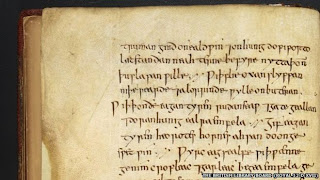 2015 TBR Reading Challenge
2015 TBR Reading Challenge
Book: Miss Cayley's Adventures by Grant Allen
My Categories: literary fiction, male author
Wendy Crutcher's Category: Kickin' It Old School (Copyright date is 1899)
 The SmartBitches wrote a wonderful review of the book.
The SmartBitches wrote a wonderful review of the book.
The book abounds in funny silliness and reads like chick-lit at times. I'm amazed that this endearing story was written by a Victorian gentleman. It starts off with:
On the day when I found myself with twopence in my pocket, I naturally made up my mind to go round the world.
And continues on with sentences such as this:
I had a lovely harangue all pat in my head, in much the same strain, on the infinite possibilities of entertaining angels unawares, in cabs, on the Underground, in the aerated bread shops; but Elsie's widening eyes of horror pulled me up short like a hansom in Piccadilly when the inexorable upturned hand of the policeman checks it.
And this:
I sat down on a chair at the foot of an old elm with a poetic hollow, prosaically filled by a utilitarian plate of galvanized iron.
Given the madcap adventures featured in this book for our intrepid heroine, there's the presence of the obligatory villain who conveniently pops up all over the place giving our heroine a chance to shine. Even when the villain is off-page, our heroine shines in every venture she turns her hand to or meddles in.
When she chooses to sell bikes, she has clients clamoring for her bikes in three countries. When she chooses to cycle as her main means of transportation, she can easily go from Germany to Switzerland. (Really!) When she decides to turn amanuensis in Italy, her unofficial fiancé's uncle, from whom he's going to inherit untold riches, is her client. When she decides to travel to Egypt, her expenses are paid for by a newspaper. She rescues an English woman coerced under the veil in a desert oasis in Egypt. She makes a clean shot killing a tiger on her first safari on her first elephant. She climbs down a sheer cliff to rescue her fiancé.
What's not to love about this uber-talented, uber-accomplished heroine? Told in first-person, the whole effect is charming.
Even her fiancé is charming. Here's some of his marriage proposal:
A man ought to wish the woman he loves to be a free agent, his equal in point of action. He ought to desire for her a life as high as she is capable of leading with full scope for ever faculty of her intellect of her emotional nature. If a man can discover such a woman as that, and can induce her to believe in him, to love him, to accept him, well, then, I think he should be happy in devoting his whole life to her.
I continued to be amazed that this story was written by a Victorian gentleman. Was it possibly a woman writing under his pseudonym? Nope, it was all him, writing a perfectly sketched feminine-perspective story of a purely feminine adventure, where the men are perfunctory at best.
He does the upper-class drawl perfectly well in the dialogue of one of the two villains. I usually don't like to read accented prose, but this was perfect.
Despite its charm there were sour British-Empire notes of discrimination in the story. She displayed utter contempt for quiet souls who were slightly padded and preferred sedentary occupations. Some of the secondary characters constantly referred to Egyptians and Indians as heathens, creatures, black bounders, n**** or darkies, not worthy of any consideration or respect. Oh, these Caucasian English men took full advantage of their hospitality but offered only contempt back.
A Maharajah from Rajputana, whose ancestors were Maharajahs for centuries before, says this:
You treat a native gentleman, I see, like a human being. I hope you will not stop long enough in our country to get over that stage—as happens to most of your countrymen and countrywomen. In England, a man like myself is an Indian prince; in India, to nine-nine out of a hundred Europeans, he is just "a damned n****.
Given her sympathetic and more egalitarian (in comparison) view of Egyptians and Indians, I believe the author sought to show prevalent racism versus englightened views. He wasn't entirely successful though, there was bleed-through discrimination that I believed was his.





 The SmartBitches
The SmartBitches 






